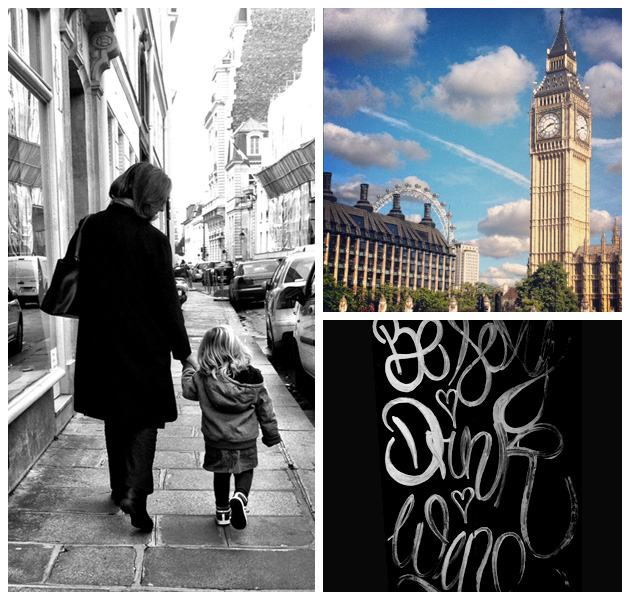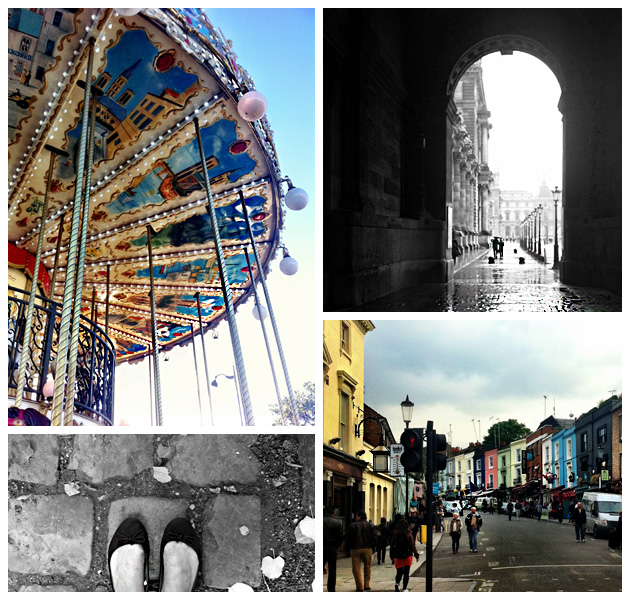Recently I did something that most people would call a bit crazy. As I walked out of the office one Friday afternoon, a seemingly random thought came into my head: I should quit my job. Later that weekend, I did just that. Then I did the next logical thing, I booked a flight to Europe for two weeks.
Truth be told, it wasn’t a sudden decision. Over the years, I’d spent a bit of time planning to start my own user experience design consultancy. Though well intended, all my planning had not lead toward any results.
I see now that I was trying to force something to happen and didn’t leave room for random and chance. We often discount the impact of unplanned events, interactions or ideas because it’s part of our human nature to plan, process, and find meaning in what’s happens around us. But, what if we have it all wrong?
While in Europe, I remember spending a morning in my London hotel room trying to plan every hour of my day. At a certain point, I decided that for the rest of the trip I would stop planning and start exploring. I had the best trip of my life (and even ended up extending it a few days while in the middle of a four-hour layover at Heathrow).
Having no agenda afforded my thoughts to be completely clear. I was able to recognize and respond to the things that seemed interesting to me. I had an hour-long conversation (in French) with a stranger in front of Notre Dame about the different attitudes that Americans and Europeans have toward work and success. I went to the Louvre for an afternoon and explored all the art that everyone else misses because they’re too busy following signs to the Mona Lisa so they can take a photo and then cross it off their cultural list. I spent an evening drinking wine at a French restaurant in the English countryside where I made some new friends (and even met a British celebrity).
While rushing for my flight back to NYC, I picked up a magazine in Heathrow and learned about Frans Johansson, a best selling author who has made it the focus of his career to show that by adding diverse experiences to our lives, we can foster better ideas and innovation. In his book, The Click Moment: Seizing Opportunity in an Unpredictable World, Johansson writes, “The biggest factor governing success or failure is randomness, chance, and unseen forces. Things that lie outside our control. Today, randomness is the dominant factor in our lives and careers. Whatever plan or strategy we make in advance is sure to be wrong.”
Of course, I’m certainly not advocating that we all stop planning and sit back waiting for luck. Luck is a lie. Instead, we should tune ourselves to recognize these opportunities. Louis Pasteur, a French chemist and the father of modern microbiology wrote this: “In the field of observation, chance favors only the prepared mind.” As user experience designers, I’m convinced that the single most important skill we can develop is to have prepared minds. Yet today, I fear that skill is in jeopardy.
Our field is becoming increasingly popular. There are more resources and opportunities to learn about and educate oneself in the field than ever before.
What people don’t understand, however, is that the biggest part of user experience is what you don’t see (I wrote in a recent blog post). It’s the process that happens to get to those deliverables. It’s the hours of critical thinking and problem solving. It’s the hundreds of wrongs before you finally hit the right. It’s the complex game of Jenga as you try to put all the pieces of the puzzle together—without breaking it.
My concern is that we’re focusing too much on the act of making and not spending enough time being students of behavior—listening to the stories of our consumers, observing how people live, and being both open and available to chance insights from the world churning around us.
The heart of what we do is creating stories. In the same way that people get lost in a good book, or lose track of time while listening to a great musical composition, they should also get lost in a great product. The experience of engaging with a well-designed product should be effortless. The best authors don’t just start writing. They spend countless hours, months, and even years developing and understanding the characters, plot, and theme that will make up their story. They are careful to leave room for random turns of events, slight moments of genius, and chance insights and observations that can reshape and change everything. As the award winning film and television writer, Robert McKee says: “We rarely know where we are going; writing is a discovery.”
In the same way that writers leave room for discovery in their process, we as user experience designers must do the same. However, these moments of discovery and chance can only happen if we have prepared minds.
Enter Le Flâneur
So, how can we prepare our minds to recognize and respond to moments of random insight? Turns out the French may have an answer: flâner, a verb that means “to stroll.” Derived from this verb is the noun flâneur, a person who would stroll, lounge, or saunter about on the streets of Paris.
Throughout the 16th and 17th centuries, a flâneur was regarded as somewhat lazy, mindless, and loafing. However, in the 19th century a new definition of the word emerged that captures the essence of what I believe makes a great user experience designer.
By this definition, a flâneur is more than just an aimless wanderer. The flâneur’s mind in always in a state of observation. He or she connects the dots through each experience and encounter that comes his or her way. The flâneur is in constant awe of his surroundings. In the article “In Search Of Serendipity” for The Economist’s Intelligent Life Magazine, Ian Leslie writes that a flâneur is someone who “wanders the streets with purpose, but without a map.”
In the world of product design and start ups, there’s growing pressure to focus prematurely on the solution, to connect the dots backward instead of forward, to design the system before you’ve addressed the story. But, as user experience designers, we know that our greatest purpose is to develop the most intimate understanding of the people we design for and the problems they’re facing. To do this, we must be flâneurs.
Perhaps the most influential figure to redefine the flâneur was the French poet and author, Charles Baudelaire. In his book The Painter of Modern Life, he describes a man he knows who is seemingly the quintessential flâneur:
“His passion and his profession are to become one flesh with the crowd,” Baudelaire writes. “For the perfect flâneur, for the passionate spectator, it is an immense joy to set up house in the heart of the multitude, amid the ebb and flow of movement, in the midst of the fugitive and the infinite. To be away from home and yet to feel oneself everywhere at home; to see the world to be at the center of the world, and yet to remain hidden from the world … ”
Further reading of Baudelaire’s work reveals three key qualities of a flâneur that we can adopt in order to develop a prepared mind.
1. A Student of the World
First, Baudelaire says that the man, “was precisely not an artist, but rather a man of the world [who] wants to know, understand, and appreciate everything that happens on the surface of the globe.” As user experience designers, we’re always faced with a dichotomy of understanding where our craft is concerned. So many people only care to understand or acknowledge the output, the design—the things they can see and inevitably give input on. However, we do more than create. We follow an investigative process, seeking first to understand the people and problems we’re designing products for. We must be students of culture and human behavior, always trying to piece together why people do what they do.
2. A Childlike Mind
Next, Baudelaire acknowledges the childlike mindset of a flâneur, who is “a man-child, as a man who is never for a moment without the genius of childhood—a genius for which no aspect of life has become stale.” We must strive to see the world through the lens of a child, with a fresh and inquisitive perspective. Baudelaire goes on to write, “The man of genius has sound nerves, while those of the child are weak. With the one, Reason has taken up a considerable position; with the other, Sensibility is almost the whole being. But genius is nothing more nor less than childhood recovered at will.”
3. A Consummate Critic and Communicator
Arguably, the most important quality of the flâneur is that he or she is not just simply aware of what’s happening around him, but that he can make sense of it. Observation is not enough. What’s important is the ability to derive meaning combined with the ability to communicate that to others. To do so, the flâneur must have the perfect balance of left- and right-brain thinking. He possesses just enough imagination to see what’s possible, yet can also be able to translate these possibilities in a way that makes sense to others. He must be able to internalize his surrounds and externalize his thoughts.
Conclusion
As user experience designers, we must lead our processes and people with meaning, purpose, and intent. We must connect the dots forward from a problem to solution, not the other way around. This can only be done if we become more observant, aware, and empathetic.
When asked why he went to his studio everyday, Picasso said, “When inspiration arrives, I want it to find me working.” Another flâneur, it would seem.
In a time when there’s so much focus on making, the single most important gift we can give to our industry is to teach people how to see the world around them—to slow down, derive meaning, and start the process of designing a real solution.










